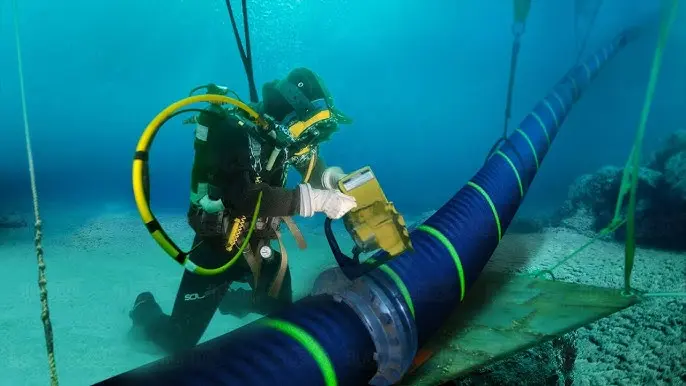Questions have surfaced surrounding the state of the faulty cables that led to widespread internet disruptions across several African countries, Nigeria being among them, in the recent past.
Among the conjectures circulating, one suggests that the cables might remain unrepaired due to having exceeded their intended lifespan, potentially being severed in the process.
Contrary to these assumptions, Chris Wood, the CEO of the West Indian Ocean Cable Company (WIOCC), has dismissed such claims, stating that none of the four cables damaged in the incident has reached the end of its useful life.
He explains that cable cuts are a routine event worldwide, occurring due to factors like ship anchors, subsea landslides, seismic activity such as earthquakes, and similar occurrences.
He also mentioned ongoing efforts to address the issue, though he did not provide specific information regarding when the repairs are expected to be completed or the associated costs.
Read also: Cable Cut: Telcos, Banks Reroute Traffic; Network Now Patchy
Wood said: “There’s very limited capability to restore those networks at this time because there isn’t the same level of network diversity. We’re working with our partners to land Equiano in Ghana and we’re working with the government and regulator there to acquire the correct licenses and everything to bring Equiano into Ghana and hopefully that will be done as fast as possible and any future events like this will have a smaller impact.
“And in terms of the impact on other countries, there are different levels of impact felt by different countries. Equiano lands in Nigeria, so there are restoration opportunities here. It lands in Togo, so there’s restoration opportunity in Togo, but it doesn’t land in Ghana, for example, or Code d’Ivoire.
“One of the reasons these cuts have actually had such a significant impact also is because four or five weeks ago there were cuts in the Red Sea. So three cables were cut in the Red Sea, which also serve Africa.
Consequently, the absence of the Red Sea cuts could have facilitated the restoration of a considerable amount of traffic, redirecting it south from Nigeria, around South Africa, and back up the Red Sea. As a result, the impact of this incident has been magnified by the additional cuts in the Red Sea.
Wood shared that the financial burden of repairing the cables would be considerable, totaling millions of dollars. He remarked that the expenditure is substantial, potentially ranging from $1 million to $2 million per cable, depending on the duration for the ship to locate and complete the repairs.
“I can’t say exact figures because it depends on the nature of the cuts; how long it takes to repair them, but it’s when you look at the four systems together it is several, several millions of dollars.
To minimize risks and prevent future occurrences, Wood revealed that WIOCC has made strategic investments in a new cable called 2 Africa.
This cable, presently being installed, will have landing points in both Lagos and Akwa Ibom, providing more than two supplementary redundancy levels. This enables the cable to manage traffic in both northern and southern directions. Therefore, in case of a disruption in the northern sector, it can still support traffic from the southern region.

